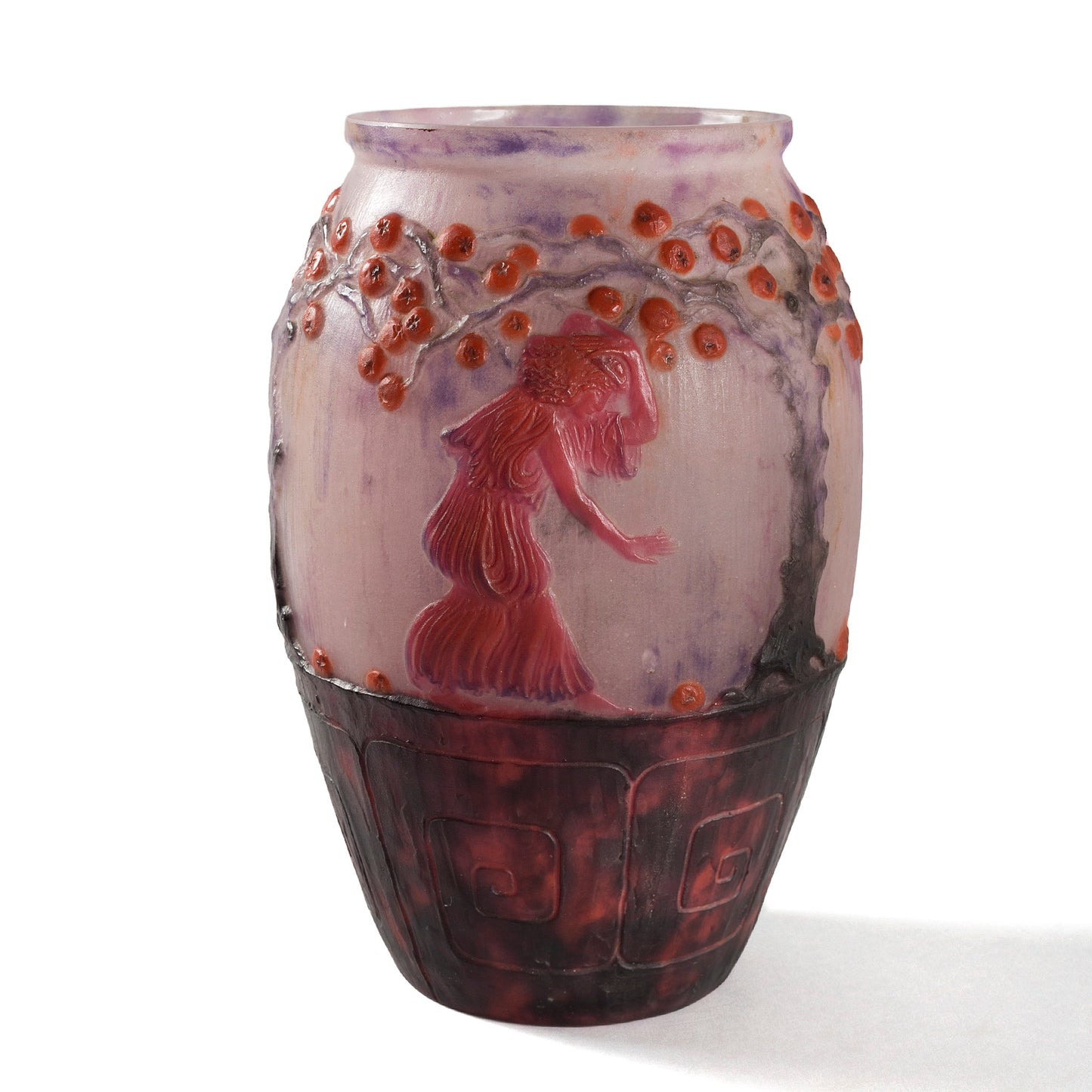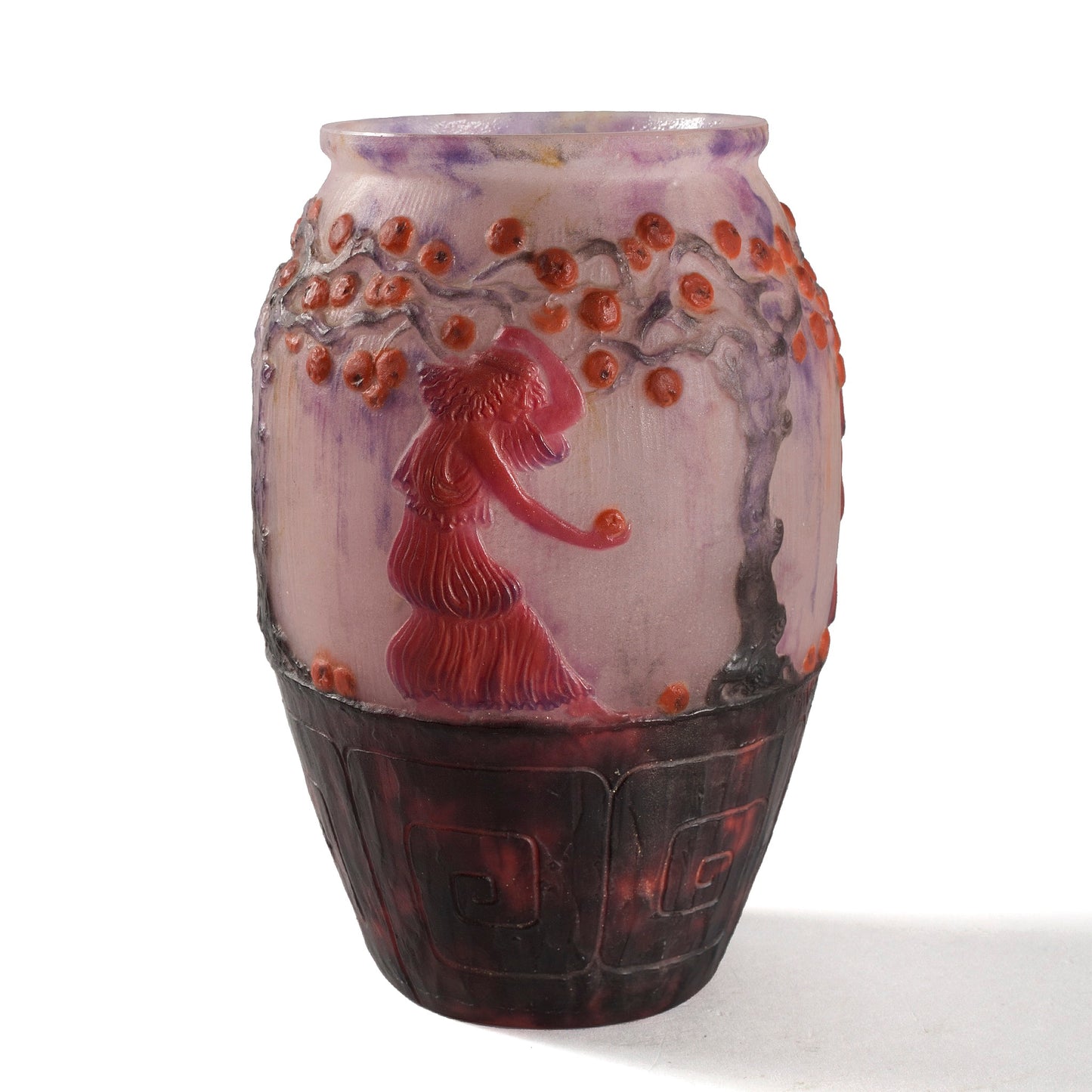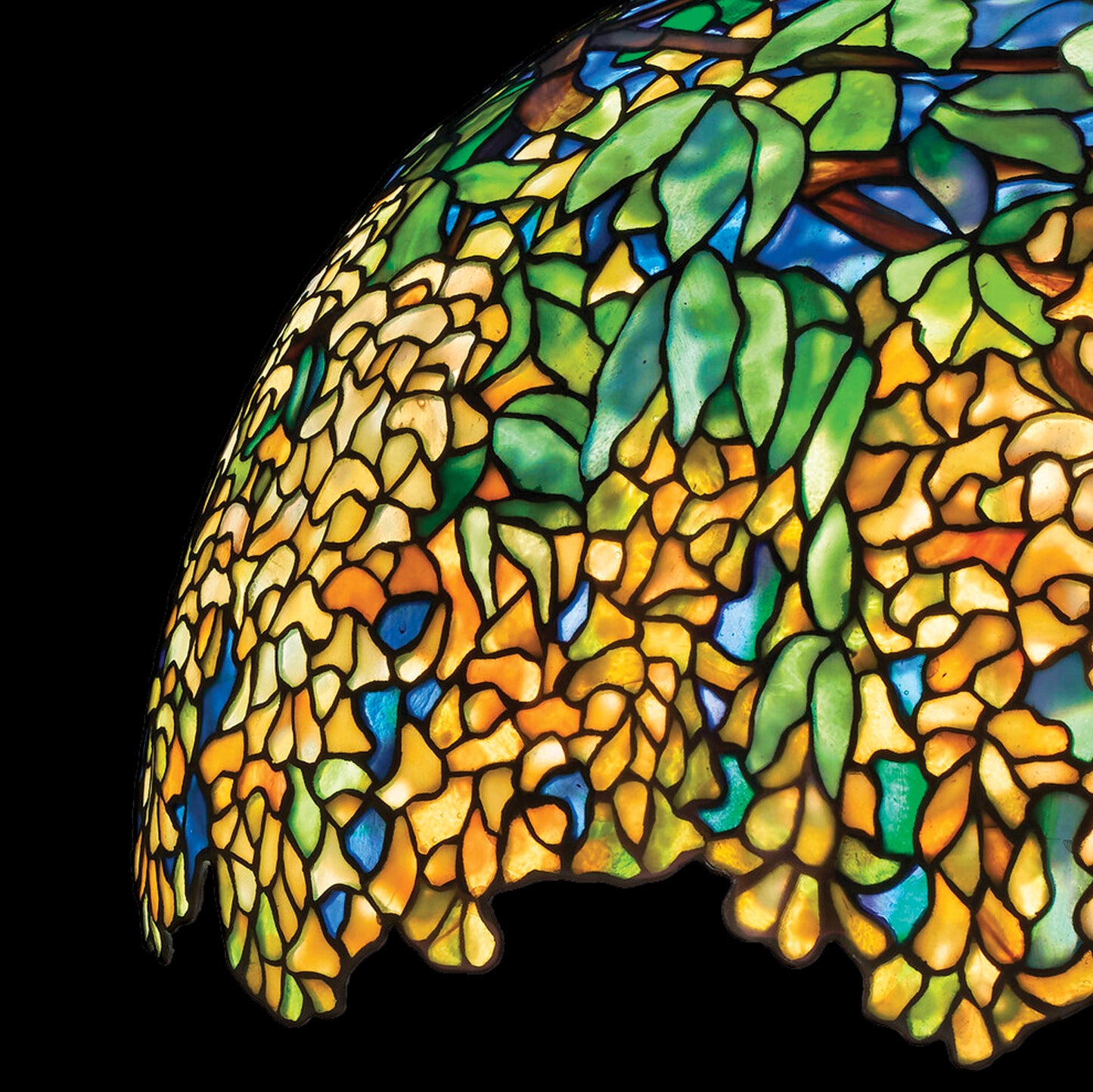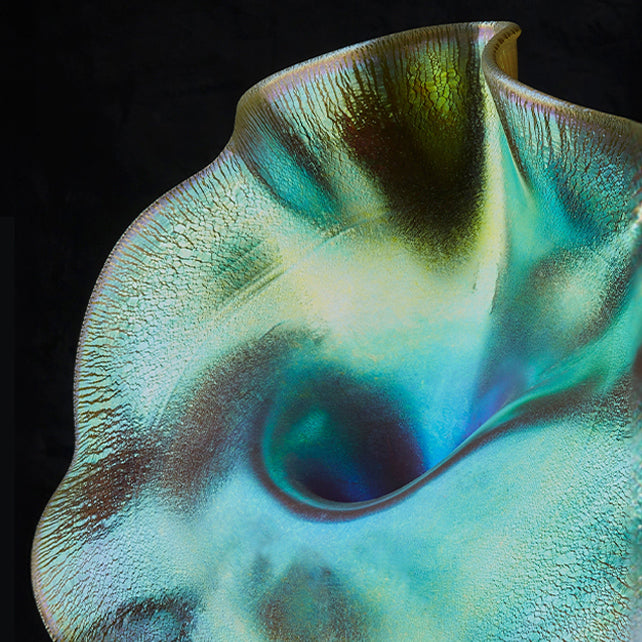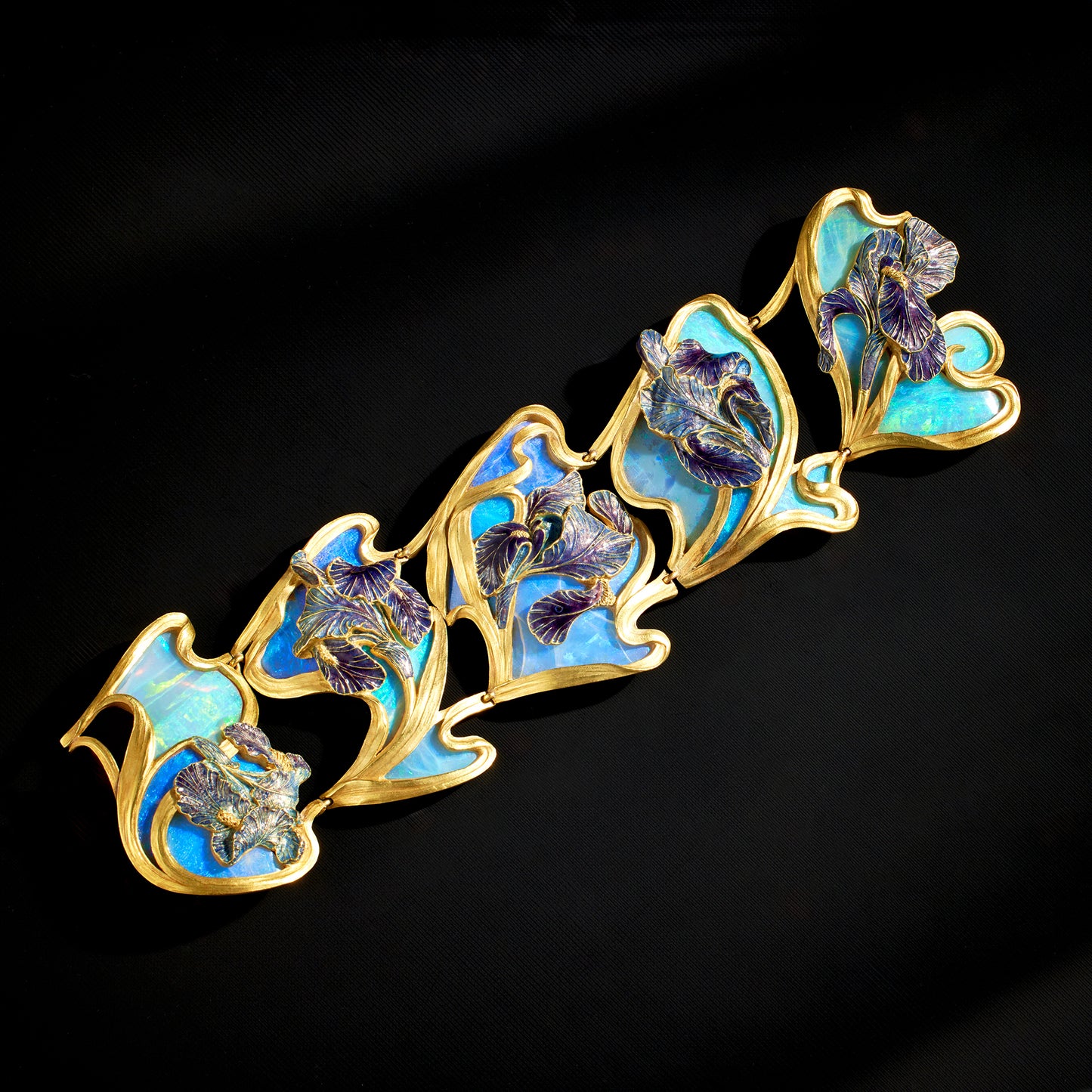Gabriel Argy-Rousseau, creative from a very early age, was a French sculptor, ceramicist and master glass artist, who played a pivotal role in the early 20th century art glass movement. His innovative designs, which included vases, lamps, jewelry, bowls, and other decorative objects, spanned both the Art Nouveau and Art Deco periods. Following his graduation in 1906, Rousseau took the title of “engineer-ceramist,” working in a research laboratory before devoting his focus exclusively to the art of pâte de verre. Gabriel Argy-Rousseau began exhibiting in 1914 and quickly gained success and fame with massive critical acclaim. Argy-Rousseau's pâte de verre work is immediately recognizable for its technique and highly individualized decorative style that was apparent even in his earliest works. As was the ideal of the era, nature was the foremost theme in Argy-Rousseau's work, where flowers, insects, animals, and the female form were abundant. From 1917 onwards, his naturalistic forms became increasingly elongated, and the influence of both Japanese art and Greek mythology became more apparent.
This store requires javascript to be enabled for some features to work correctly.











































